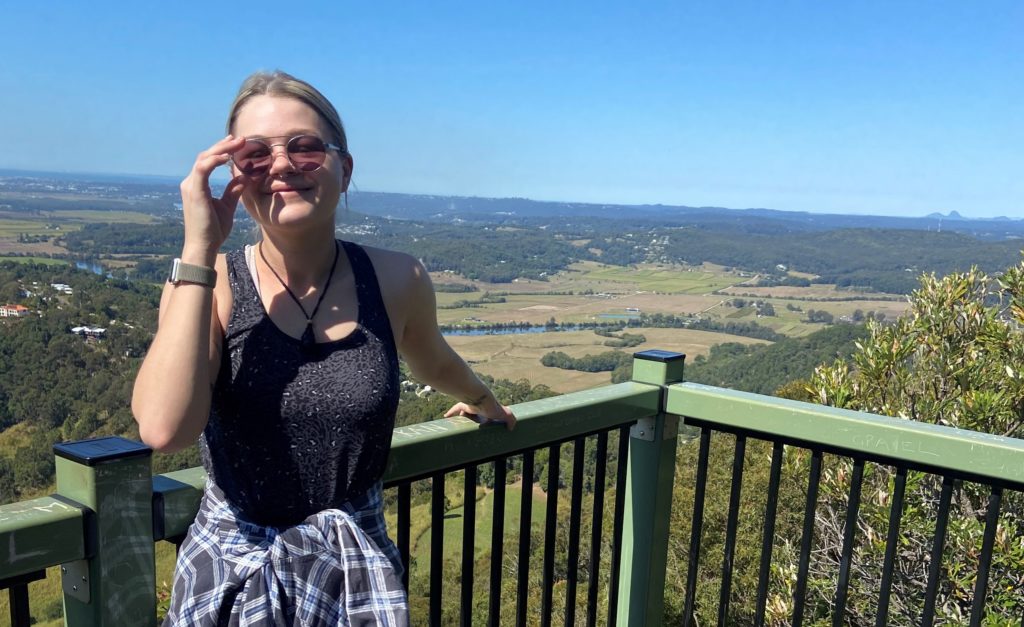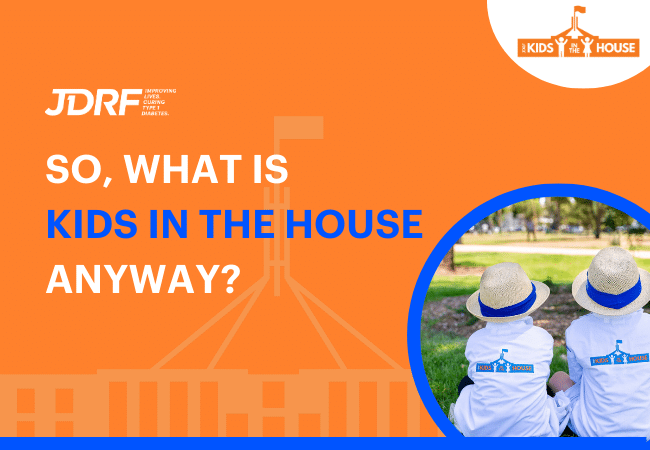Talking T1D advocacy with QLD Lead Advocate Carrie Forbes
For this month’s spotlight on a JDRF advocate, we spoke to Lead QLD Advocate, Carrie Forbes. Carrie was diagnosed when she was 5 years old and is now 23. She chose to become an advocate because she feels it’s one of the few things within her control when it comes to T1D. Carrie also loves being a voice for Australians living with T1D so that they, and future generations, can have better outcomes. Read on to find out her advocate highlights and advice for those wanting to get involved in advocacy.

Can you tell us a bit about your T1D diagnosis?
I was diagnosed when I was 5 – the worst day of our lives. I had been drinking copious amounts of water and needing to go to the toilet all the time. It was a consistent “flush out” of excess glucose in my body which, at the time, we didn’t know was there. I don’t remember the tests done prior, but I remember my mum picking me up from school in a panic and driving me to the hospital. There, I encountered what genuinely felt like a nightmare; being physically restrained to inject me with insulin, lots of tears and fears for what was ahead – what would affect our lives permanently.
How do you feel T1D has impacted your life?
I don’t know if there’s enough room or words to express just how much this disease has impacted our lives. First and foremost, I have so many fears – for growing older, having complications and for my future. T1D has impacted school life, sleepovers, being different, always having more to think about than the average peer does. It’s thinking about site changes and sensor inserts when everyone else is worrying about looking dolled up and ready to go out. It’s affected mine and my family’s mental health greatly. And don’t even get me started on the financial burden T1D brings.
Why did you choose to become a JDRF advocate?
Being an advocate is one of the few things within my control when it comes to this disease. I love being a voice for many Australians living with T1D. My family have been great role models and we have always been a great team in advocating. It’s for the future generations for me – that’s why I do it. It’s so the young kids diagnosed with T1D have better outcomes, feel more supported financially and have technology that they can afford for their entire lives, not just when they are children. I also used to share my advocacy with a very special person. She left this world too early but I will continue our work in her memory.
If you had to pick one highlight as a JDRF advocate, what would it be?
Hands down – Kids In The House. This event showcases lots of kids alike, meeting with members of Parliament to hear our stories. This event is so important – not only for the advocates to understand that we aren’t alone but for Parliament to understand the reality of this disease in this country and what specifically they can do to assist us with managing it. We advocate to save lives, ease anxieties, allow for freedom and save future hospital cost burdens.
What advice would you give to new JDRF advocates?
Be yourself. Be transparent and share your truth. Your voice matters and, through advocacy, it is heard. We are all in this together and we rely on each other to achieve our goals.
What do you hope our advocacy efforts will be able to deliver in the future?
I sincerely hope that we can continue to work with the Government to ensure affordable technology is available to anyone who chooses to access it. Access to insulin pumps and CGMs has had the biggest positive impact in my diabetes management and I want to be able to afford it for the duration of my life. Healthier, happier people with T1D is the goal.




